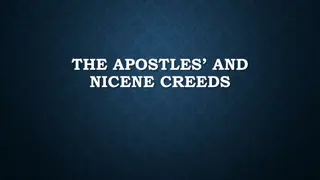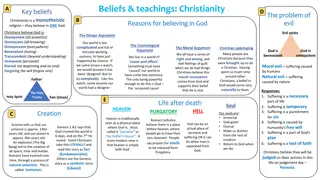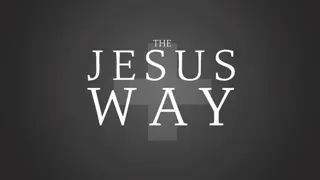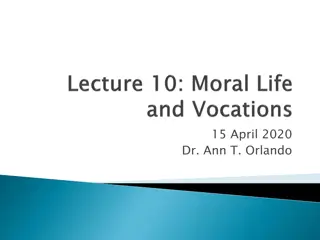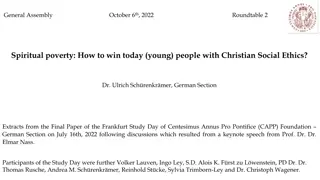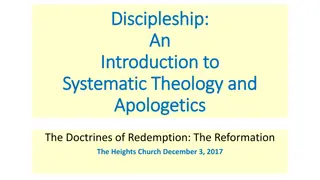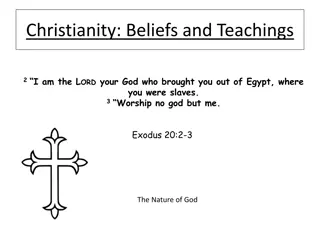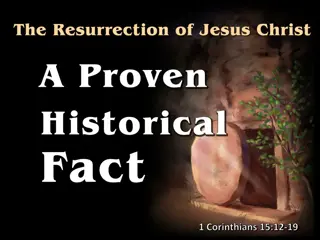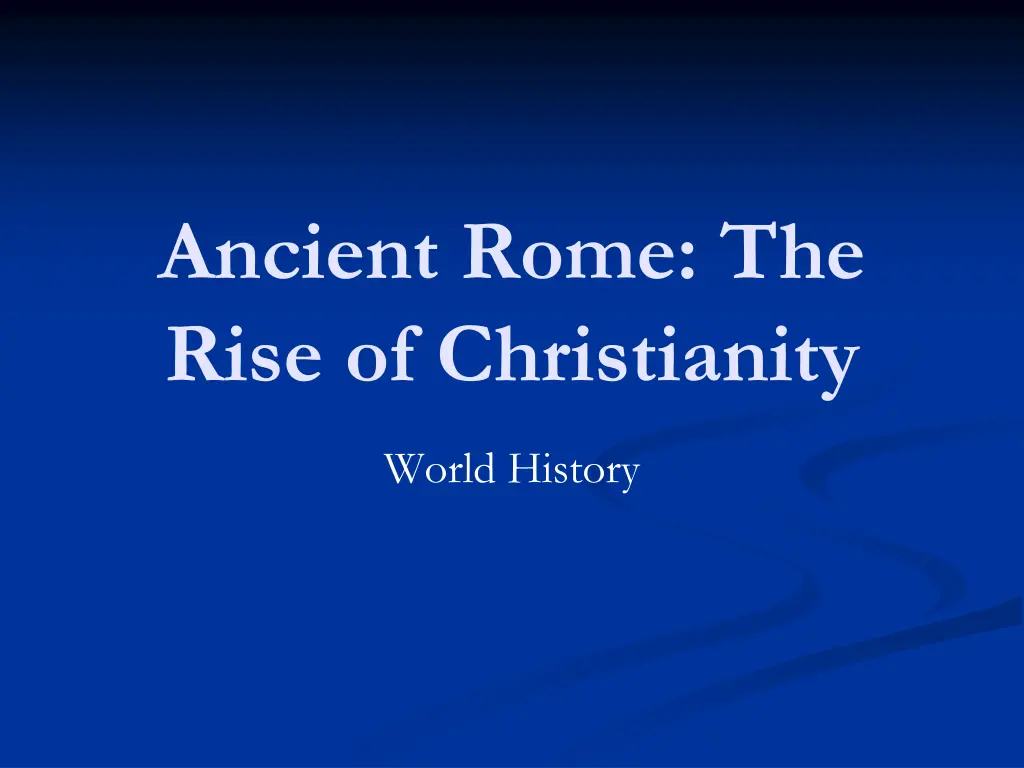
Rise of Christianity in Ancient Rome
Explore the rise of Christianity in Ancient Rome, from its origins to the birth of Jesus, and understand how this new religion spread during the Roman Empire. Discover the historical background, significance of Jesus, and the impact of early followers in this pivotal period of world history.
Download Presentation

Please find below an Image/Link to download the presentation.
The content on the website is provided AS IS for your information and personal use only. It may not be sold, licensed, or shared on other websites without obtaining consent from the author. If you encounter any issues during the download, it is possible that the publisher has removed the file from their server.
You are allowed to download the files provided on this website for personal or commercial use, subject to the condition that they are used lawfully. All files are the property of their respective owners.
The content on the website is provided AS IS for your information and personal use only. It may not be sold, licensed, or shared on other websites without obtaining consent from the author.
E N D
Presentation Transcript
Ancient Rome: The Rise of Christianity World History
Overview/Objectives Briefly review the Roman Empire at the time of Christianity. Understand the origins of Christianity and its early followers. Review geographic locations. Complete worksheets.
Entering a Time of Peace Under Julius Caesar, Rome became an empire. Octavian Augustus was the first emperor of Rome. Rome became too powerful to be challenged and entered a time of peace in the empire, known as the Pax Romana or Roman Peace. Allowed ideas to spread across the world.
How Powerful Was Rome? 3 million square miles 80 million people 1+ million residents in city of Rome.
The Rise of a New Religion In 63 BC, Rome took over Judea, the home of the Jewish religion. Judea was controlled by King Herod, a Jewish governor for Rome. After Herod s death, fighting broke out among his sons. Rome sent troops to create peace in Judea.
The Birth of Christianity Judaism was tolerated by the Romans at first. First Monotheistic Religion: Only one supreme god. Jesus of Nazareth was born under the rule of Octavian (Caesar Augustus) Grew up preaching the idea of one true god Spread a message of peace, love, forgiveness. Many Jews believed that Jesus was the Messiah or Savior, from the Romans. Jesus was called Christ which means savior in Greek.
How Do We Know About Jesus? Followers of Jesus wrote about the teachings and experiences that occurred during his life. These writings were called Gospels, meaning good news Can be found in the New Testament of the Christian Bible: Matthew, Mark, Luke, and John. The Old Testament is used by the Jewish faith which does not believe Jesus was the true Messiah.
Why did Christianity appeal to people? Embraced all people. Promised life after death for ALL people. Appealed to poorer people. Because of the Pax Romana, these ideas of Christianity were able to spread quickly through the empire.
The Death of Jesus The popularity of Jesus with the poor angered the Romans and the Jews. Jesus was called the Son of God and a King Jews feared Jesus s preaching would anger the Romans Jewish leaders turned Jesus over to the Roman governor of Jerusalem, Pontius Pilate to be crucified. Give to Caesar what belongs to Caesar, and to God what belongs to God.
Golgotha- Place of the Skull Golgotha Location The Place of the Skull The Gospel texts identify the location where the Romans carried out crucifixions as Golgotha which, in Latin, translates as, Calvary. In Aramaic, Golgotha means the place of the skull. The location for Golgotha was identified in ancient writings as a hill resembling a skullcap -- the top of a skull -- rather than the face of a skull. Additionally, all four Gospels refer to the hill using the Greek word kranion, meaning cranium or upper part of the skull. Therefore, it was probably a rounded hill. The mistaken understanding of the place referring to the face of a skull has lead to misidentifications over the centuries. According to the Gospels, the Golgotha location was near the city, but outside the city walls, outside the gate. It was a location that was accessible to people walking by on a road, and it could be seen from far away. The traditional location of Golgotha and the crucifixion of Jesus was established when Helena of Constantinople came to Jerusalem in the 4th century AD and stated that the crucifixion had occurred on a specific hill, which was supposedly about a stone s throw from where the tomb of Jesus was situated. Today, this site is known as the Church of the Holy Sepulcher, which was built over Jesus tomb, and eventually the complex was expanded to include the traditional Golgotha location. https://www.drivethruhistory.com/golgotha-location/
Followers and the Apostles Followers of Jesus became known as Christians. Much of what is known about Jesus comes from the writings of his Apostles. *Apostle means One who travels. Apostles traveled, spread Christian teachings, and wrote the Gospels of the Bible.
Roman Persecution of Jews & Christians Why did the Romans hate Christianity/Judaism? Monotheism vs. Polytheism Christians/Jews didn t recognize the emperors as Gods. Blamed for any problems in Roman society. Emperors such as Nero crucified and tortured Christians and Jews as traitors. Many Jews fled their homeland to escape- Known as the Jewish Diaspora- or spreading out Christians and Jews became Martyrs: Dying for their beliefs.
The Jews Strike Back 66 AD- Jews rebel against the Romans. 70 AD- Romans stormed Jerusalem and destroy their temple, leaving only the Western Wall a.k.a the wailing wall . 73 AD- Jews and Romans fight at the Battle of Masada. Over 500,000 Jews died in this battle, mostly of suicide. Today- The Western Wall is Jerusalem s holiest shrine.
The Martyrdom of Peter Peter the Apostle traveled to Rome and was crucified by Nero. Believed to be the first Bishop or Pope of the Christian Church. Today, all Popes are believed to be descendants of St. Peter. We now call this the Catholic church which means Universal .
Christianity Under Constantine In 312 AD, Constantine became Emperor of Rome. During Battle, he saw an image of a cross and won. 313 AD- Constantine issued the Edict of Milan making Christianity a legal religion in Rome. To strengthen the religion he called the Council of Nicaea to establish the core beliefs of Christianity, leading to the Nicene Creed.
Finally Official In 380 AD, Emperor Theodosius declared Christianity the Official Religion of the Roman Empire.


